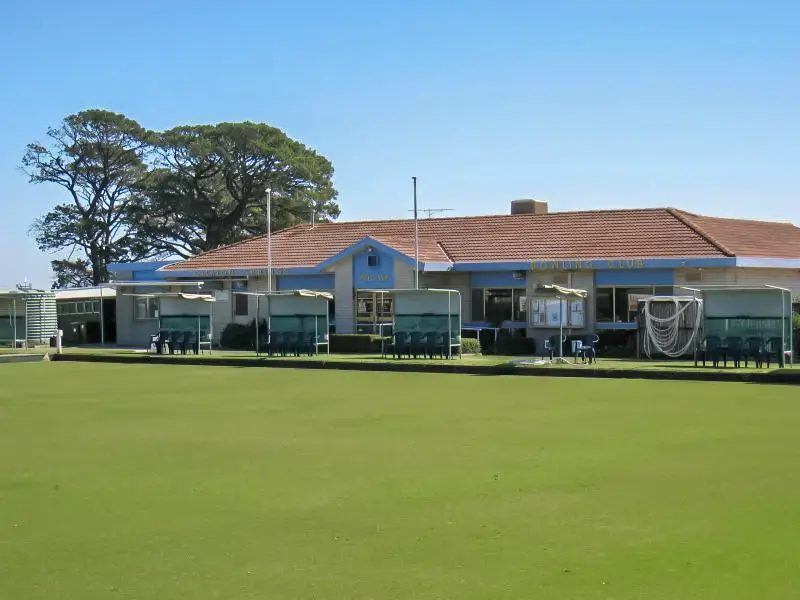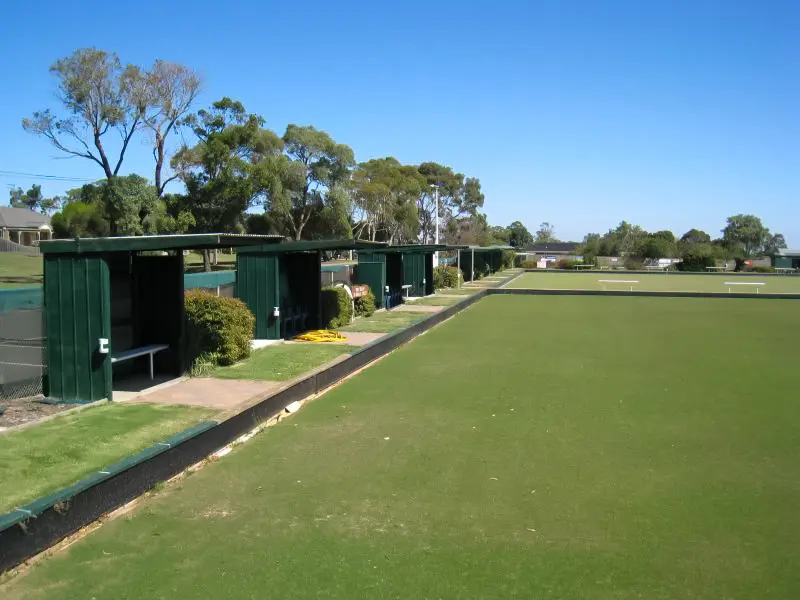Origins of Clifton Springs Bowling Club
A Historical Account
The following notes have been prepared by Maylie Sharp to provide Club Members with information about the establishment of the Clifton Springs Bowling Club.
Clifton Springs Bowling Club was founded following the Bellarine Council’s acquisition of land from Willmore & Randall. These developers had previously developed and subdivided the Clifton Springs area, making commitments to the buyers of building blocks regarding various sports facilities in the region. Unfortunately, many of these promises remained unfulfilled. After numerous appeals from local residents and legal battles, the developers were compelled to honor some of their commitments, including the construction of bowling greens, done as cost-effectively as possible.
However, the greens remained unused for approximately three years. In 1977, the Council acquired the Community Centre and its surrounding sporting areas, which included a golf course, tennis courts, and the bowling greens. To justify the use of ratepayer funds, the Council needed to engage interested residents in activating these facilities. As a result, a Public Meeting was convened in October 1977 to gauge residents’ interest in forming clubs to use these amenities. Approximately a dozen people expressed their willingness to engage in bowling, leading to another meeting being organized to establish a Committee. The Council sought advice from Mr. M. Merrifield and Mr. Lex Mortimer on the process of forming a functional Committee.


Tom Sharp was elected as the President, much to the chagrin of his wife, who had spent the preceding three weeks trying to dissuade him from taking on the responsibility. However, there were few volunteers for these roles. Tom’s wife had limited interaction with bowlers, primarily through her Wednesday golf games with ladies who had participated in Tuesday’s bowling matches, and who often voiced their grievances about the situation.
Someone playing nearby, not affording them any shots during the previous Pennant match, led to the famous last words that the President’s wife would not be involved.
Mr. Jack Bain was elected as the Secretary – a highly capable and hardworking individual who had previously worked for B.P. Oil Co. and somehow had come into possession of a quantity of B.P. green paint. This paint was used to coat our cupboard, which Jack had obtained from the Brotherhood of St. Lawrence. Our shelters were generously donated by members, with Jack taking a lead role in their construction, and they too were painted in the distinctive B.P. green. A Treasurer was appointed to manage our finances, which were virtually non-existent at that point. Two ladies from another club initially offered to serve as President and Secretary but later found they couldn’t accept the positions due to their participation in pennant matches for their home club. After a flurry of phone calls to the President, he asked Lyn Bain, the wife of Secretary Jack, to assume the role of Lady President. Lyn accepted, and Peggy Howker agreed to be the Secretary, with Doreen Robertson taking on the role of Treasurer. None of these ladies had prior experience with lawn bowls, so you can imagine the challenge they faced. Nevertheless, they all excelled in their roles, with Peg and Doreen emerging as some of our most dedicated and hardworking members. Lyn and Jack eventually relocated to warmer climates, and we certainly missed their presence.
Very few of our members had any prior experience with lawn bowls, so one of our seasoned bowlers kindly offered to provide lessons, with a little assistance from President Tom, who himself had not been playing bowls for very long. Our first official bowls game took place during the Past President’s Annual Christmas break-up day, which was organized by Lex Mortimer, the President of that organization at the time. The luncheon was held at the Community Centre, where Mr. Abbott was the manager, and he provided a three-course meal for approximately $4.00 per person. Everyone in attendance was quite impressed, as some may have believed that the Community Centre would serve as our Clubhouse. No one raised any complaints.
About the greens that day, which were truly terrible, as they hadn’t been played on before. However, the complaints rolled in later. Our meeting spot was a dimly lit corner beneath the Community Centre, housing our own B.P. green cupboard stocked with cups and saucers, a peculiar old table, and a couple of chairs. The dirt floor caused a lot of dust, so we ingeniously solved that issue by emptying the teapots onto it. On Sunday afternoons, we were permitted to use the bar area of the Centre for our afternoon teas, which our ladies always generously provided. Following the bowling, the Centre’s manager would bring in platters of chicken pieces and salads (which were essentially the remnants from the mid-day luncheon). Our visiting bowlers were deeply impressed, exclaiming, “What a wonderful Club, providing such delectable treats – you can’t find them anywhere else,” and so on.


During the winter months, we organized card afternoons, and the ladies contributed goodies for a trading table. If we managed to make anywhere near $20, it was considered a successful day. Then, with considerable persuasion from President Tom, the Council provided us with a temporary clubhouse near the greens, promptly christened “Uncle Tom’s Cabin,” where our worldly possessions, namely the B.P. green cupboard and its contents, were relocated. The President and Secretary invested a significant amount of effort in securing a loan to construct a proper club house, despite the challenge of not having any funds. However, they managed to secure the loan, and the clubhouse was completed in 1979.
By this point, the Club had experienced significant growth, attracting more seasoned and generous individuals to our ranks. Among them were George and Norma Willey, who were elected as Men’s and Ladies’ Presidents, and Beryl Young, our diligent and highly competent Secretary, with Esme Roberts serving as Treasurer. Beryl Young departed from our Club in 1988/89 to move to warmer climes. Norma and George Willey were exceptionally devoted and steadfast club members. Norma provided valuable guidance on matters such as the appropriate dress length and hat positioning. They were both skilled bowlers and took on the task of giving us lessons, which must have been quite frustrating for them at that stage. (Norma was a skipper in our first pennant team – she broke her left arm before the season started but played since we didn’t have anyone to take her place.) However, they moved away to be closer to their family in Mansfield.
The men clinched their first pennant flag in 1979, a remarkable accomplishment and a truly unique experience, with no one complaining about their positions or who they were paired with – everyone played for the Club. I believe we had just enough members to form a team.
The Clubhouse was officially inaugurated on September 7, 1979, and members were asked if they could assist by lending money for the first loan payment. Over $3,000 was raised that night.
During the 1980-81 season, we had two teams participating in pennant play, and both secured a flag – leading to jubilant celebrations. The lady who served as the skip for our team must have felt quite frustrated; she would pass us on her way up the green and remark, “You girls won’t be in the team next week.” We could only chuckle, as there was no one else to substitute, and the poor skip couldn’t change the lineup. Even the men’s teams faced shortages of players. One of our most respected members, Stan Chirgwin, even enlisted his two sons in the Club to form a team. I’m sure those two young men would have preferred doing something else on Saturdays, but there was a genuine sense of teamwork and Club spirit.
Of course, our greens posed a particular challenge in the early years, as they had never been properly constructed to begin with. In the inaugural year of 1978, the greens were seeded twice, but the rain washed away the seeds. Nonetheless, we eventually had beautiful grass growing in the ditches, the greens were eventually completely rebuilt and yielded positive results, earning plenty of praise from visiting teams.
Note: The Club has grown from 25 players in those days to 200 members we have today.
